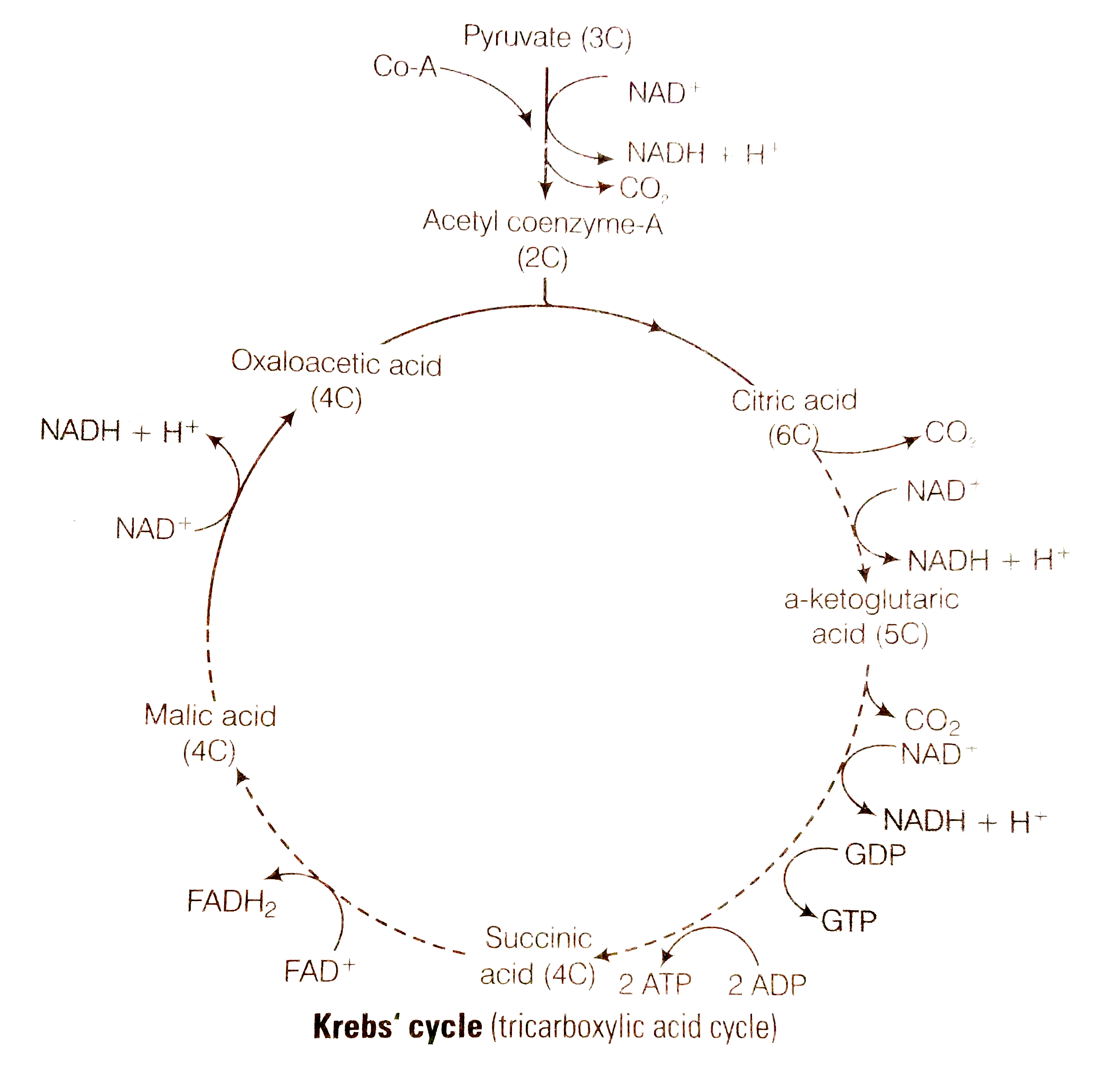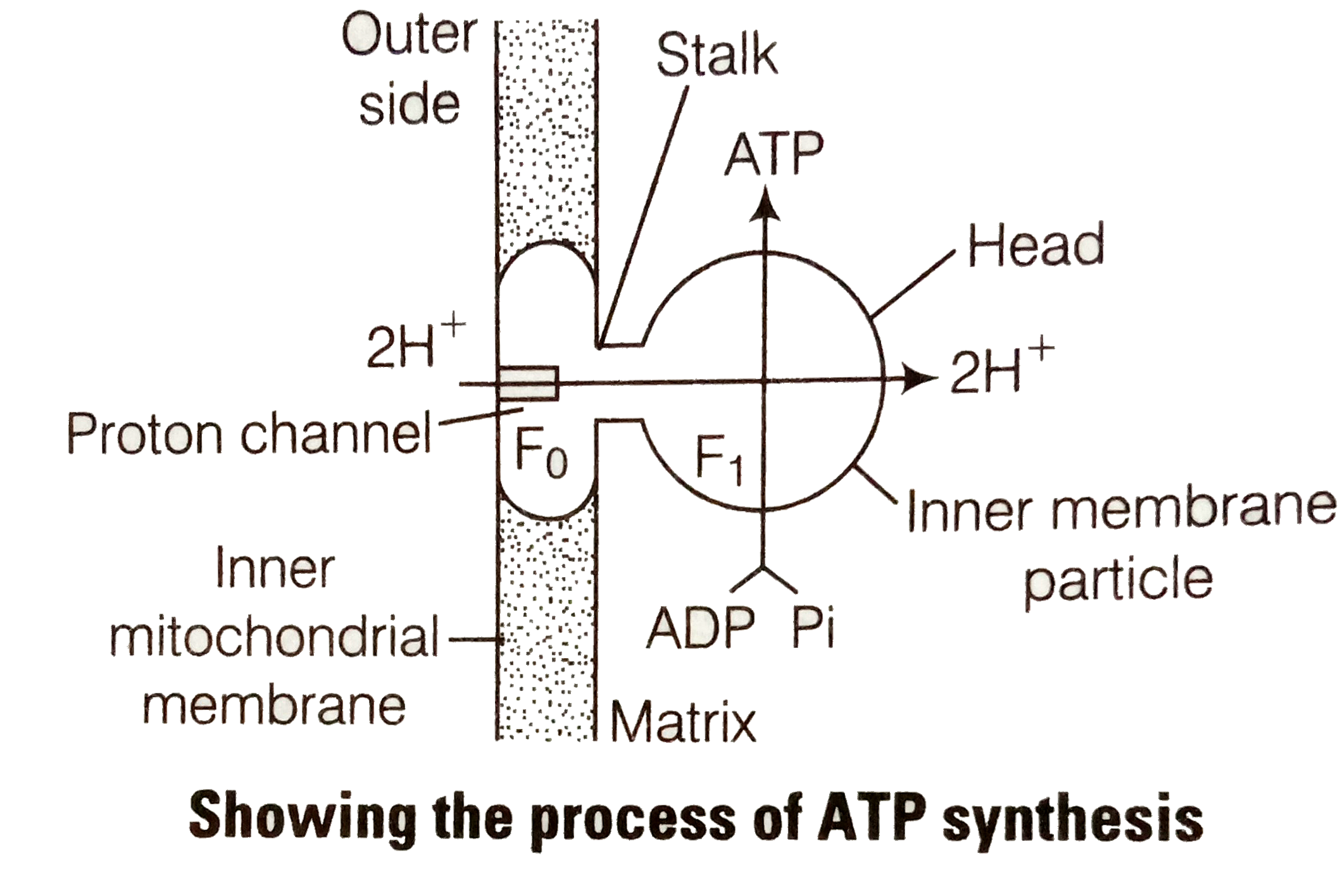Mention the important series of events of aerobic respiration that occur in the matrix of the mitochondrion as well as one that take place in inner membrane of the mitochondrion.
Krebs' cycle occurs in the matrix of mitochondria. It is depicted in the following seires of reactions

Eelectron transport chain is carried in the inner mitochondria membrane
The inner mitochondrial membrane is specific about possessing proton (H+) and electron (e−) acceptors in a particular sequence called electron transport chain . It has four enzyme compleses.
The electrons either follow the pathway of complexs I, III and IV or II, III and IV depending upon the substrates from Krebs' cycle.
The transfer of electron and hydrogen atoms takes place in the following way
Complex I consists of flavoproteins of NADH dehydrogenase (FPN) of which FMN is the prosthetic group . Combined with the flavoprotein is non-heme iron of NADH dehydrogenase. This complex spans inner mitochondrial membrane and is able to translocate protons across it from matrix side to outer side.
Complex II Consists of flavoprotein of succinate dehydrogenase. of which FAD is the prosthetic group . Combined with the flavoprotein is non-heme iron of succinate dehydrogenas.
Between complexs II and III is the mobile carrier coenzume -Q (CO-Q) or ubiquinon (UQ)
Complex III Constists fo cytochrome-b and cytochrome−c1. Associated with cytochrome-b is non-heme iron of complex III. Between complex III and IV is the mobile carrier cytochrome-c
Complex IV Consists of cytochrome-a and cytochrome−a3 and bound copper that are required for this complex reaction to occur. This cytochrome also called cytochrome oxidase, is the only electron carrier in which the heme irons has a free ligand that can react directly with molecular oxygen

Thus, hydride ions are transferred from the substance to be oxidised to NAD+ From NAD+ the hydrogen atoms are transferred to FMN of flavoprotein 1 (Fp'N). After FMN the hydrogen atom undergoes ionisation, i.e., it splits into an electron and a proton
In further stages there is no longer a transfer of hydrogens but of electorns. The electron passes to co-enzyme -Q. and from co-enzyme Q to cytochromes-b−,c1c,a, a and a_(3).Thepro→nisre≤asedee.<br>Asthehydro≥na→more≤ctronpassesdownbyF_(0)-F_(1)partic≤thecha∈,thereissiμ<a≠ous⊗tionofo≠coenymeandreductionata¬hersteps.Oxy≥nisab≤→d⇔ucise∈dsthemi→chondria.<br>Itisconverted→anionicomO_(2)^(-),comb∈eswith2H^(+)andformsmηbolicwaterreducedco−enzymeNADH+H^(+)helps∈push∈goutthreepairsofH^(+)→outerchamberwhi≤FADH_(2)sendstwopairsofH^(+)→outerchamber<br>Oξdativephosphorylationisthesynthesisofe≠rgyrichATPmo≤ce–swihtthehelpofhelpliberateddur∈g⊗tionofreducedco−enxyme(NDH_(2),FADH_(2)) produced in respiration. The enzyme required for this syntheis is called ATP synthesis is called ATP synthase present in inner mitocchondra membrnane.

Topper's Solved these Questions
- BOOK - NCERT EXEMPLARCHAPTER - RESPIRATION IN PLANTS EXERCISE - LONG ANSWER TYPE QUESTIONS5videos
RESPIRATION IN PLANTS
- BOOK - NCERT EXEMPLARCHAPTER - RESPIRATION IN PLANTS EXERCISE - VERY SHORT ANSWER TYPE QUESTIONS7videos
RESPIRATION IN PLANTS
- BOOK - NCERT EXEMPLARCHAPTER - PLANT KINGDOMEXERCISE - LONG ANSWER TYPE QUSTIONS5videos
PLANT KINGDOM
- BOOK - NCERT EXEMPLARCHAPTER - STRUCTURAL ORGANISATION IN ANIMALSEXERCISE - long answer type questions5videos
STRUCTURAL ORGANISATION IN ANIMALS
Similar Questions
Knowledge Check
- Question 1 - Select One
Inner membrane of mitochondrion possesses
AF0−F1 particlesBATP-aseCTCA enzymeDAll the above - Question 2 - Select One
Aerobic respiration takes place -
AIn presence of O2BIn absence of oxygenCIn presence of CO2DIn absence of CO2 - Question 3 - Select One
The molecule that regularly enters through the inner membrane of mitochondrion is
AATPBpyruvic acidCglucoseDcitric acid
What are the main steps in aerobic respiration ? Where does it take place ?
View SolutionThe common step between aerobic and anaerobic respiration takes place in
View SolutionIn aerobic respiration,cirtic acid cycle takes place in
View SolutionConsider the following statements with respect to respiration
A. Glycolysis occufs in the cytoplasm of the cell
B. Aerobic respiration takes place within the mitochondria
C. Electron transport system is present in the outer mitochondrial memebrane
D) C51H98O5 is the chemical formula of Tripalmitin, a fatty acid
E) Respiratory quotient = (Volume of O2 evolved)/(Volume of CO2 consumed) of the above statements.View SolutionConsider the following statements with respect to respiration.
(i) Glycolysis occurs in the cytoplasm of the cell.
(ii) Aerobic respiration takes place within the mitochondria.
(iii) Electron transport system is present in the outer mitochondrial membrane.
(iv) C51H98O6 is the chemical formula of tripalmitin, a fatty acid.
(v) Respirtoary quotient =Volume ofO2evolvedVolume ofCO2consumed of the above statementsView Solution

